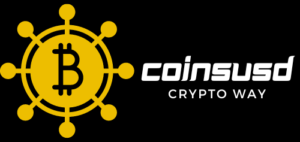Table of Contents

Web3 Projects, imagine an internet where you control your data, transactions are transparent, and trust is built into the very fabric of the web. This is the promise of Web3, which has seen investments soar to over $30 billion in the past year alone.
Overview of Web3
Web3 represents the next generation of the internet, where decentralization is key. Unlike the current Web2, dominated by big tech companies that control data and services, Web3 puts power back into the hands of users through blockchain technology. It’s important because it paves the way for a more open, secure, and user-centric internet.
Purpose of the Article
In this article, we will explore the top 10 Web3 projects that are set to make a significant impact in 2024. These projects showcase the most innovative and transformative applications of Web3 technology, from decentralized finance to virtual reality.
Project 1: Polkadot
Goals
Polkadot aims to create a network where multiple blockchains can exchange information and work together seamlessly. It’s like building a bridge between different blockchain islands, allowing them to communicate in a secure and efficient way.
Technology
Polkadot uses a unique architecture called para chains, which are individual blockchains that connect to a central chain known as the Relay Chain. This setup allows for high scalability and security.
Use Cases
Polkadot is used to improve interoperability between blockchains, making it easier for them to share data and work together. This is crucial for applications that need to operate across multiple blockchain platforms.
Why It Stands Out
Polkadot’s ability to connect different blockchains without compromising on security or performance makes it a standout in the Web3 space. It’s like the glue that binds various blockchain projects into a cohesive ecosystem.
Project 2: Chainlink
Goals
Chainlink’s mission is to provide secure, reliable data to smart contracts on any blockchain. Think of it as a bridge between real-world data and blockchain-based applications.
Technology
Chainlink operates a decentralized network of oracles, which are entities that verify and provide external data to smart contracts. This ensures that the data is trustworthy and tamper-proof.
Use Cases
Chainlink is widely used in decentralized finance (DeFi) for things like price feeds, but its applications extend to insurance, supply chain management, and beyond. Any application that requires accurate real-world data can benefit from Chainlink.
Why It Stands Out
Chainlink’s extensive adoption and integration with numerous blockchain projects highlight its importance. It’s a key player in making smart contracts more useful by connecting them to real-world events and data.
Project 3: Uniswap
Goals
Uniswap’s primary goal is to enable decentralized trading on the Ethereum blockchain. It allows users to trade cryptocurrencies directly without relying on a centralized exchange. By automating liquidity provision, Uniswap ensures that there are always enough tokens available for trading.
Technology
Uniswap uses an Automated Market Maker (AMM) model. Unlike traditional exchanges that use order books, AMMs rely on smart contracts to create liquidity pools. These pools consist of token pairs and automatically adjust prices based on the supply and demand of each token. This model allows for continuous trading and eliminates the need for intermediaries.
Use Cases
Uniswap is mainly used for decentralized finance (DeFi) trading. Users can swap various tokens, provide liquidity to earn fees and participate in yield farming. This all happens directly on the Ethereum blockchain, providing greater transparency and security.
Why It Stands Out
Uniswap has had a massive impact on the DeFi space, becoming one of the most popular decentralized exchanges. Its innovative AMM model has led to high trading volumes and liquidity, making it a go-to platform for DeFi traders. By removing intermediaries, Uniswap has democratized access to trading and liquidity provision.
Project 4: Filecoin
Goals
Filecoin aims to decentralize data storage. Instead of relying on traditional cloud storage providers, Filecoin uses blockchain technology to create a network where users can store data in a secure and decentralized manner.
Technology
Filecoin leverages the InterPlanetary File System (IPFS) to create a distributed storage network. Users who have extra storage capacity can rent it out to those who need it, and transactions are recorded on the blockchain. An incentive layer, powered by Filecoin tokens (FIL), rewards participants for contributing storage space and ensures the reliability of the network.
Use Cases
Filecoin can be used for a variety of data storage needs, from personal file backups to hosting large-scale applications. It offers secure, decentralized cloud storage that is resistant to censorship and data breaches.
Why It Stands Out
Filecoin has the potential to revolutionize data storage by making it more cost-effective, secure, and resistant to centralized control. Its decentralized nature ensures that data is spread across multiple locations, reducing the risk of data loss or tampering. This approach can significantly change the economics and security of cloud storage.
Project 5: Aave
Goals
Aave’s goal is to establish a decentralized money market protocol where users can lend and borrow cryptocurrencies without needing a traditional financial institution. It aims to provide a more open and accessible financial system.
Technology
Aave operates using smart contracts on the Ethereum blockchain. Users can deposit their cryptocurrencies into liquidity pools to earn interest or borrow assets by providing collateral. Interest rates are determined algorithmically based on the supply and demand of each asset. Aave also offers innovative features like flash loans, which allow users to borrow instantly without collateral, provided the loan is repaid within the same transaction.
Use Cases
Aave is used for lending and borrowing cryptocurrencies, enabling users to earn interest on their assets or access liquidity when needed. Flash loans can be used for arbitrage opportunities, refinancing loans, or swapping collateral.
Why It Stands Out
Aave stands out due to its user-friendly platform and unique features like flash loans and variable interest rates. These innovations have attracted a wide user base and significant liquidity, making Aave a key player in the DeFi ecosystem. Its approach to decentralized lending and borrowing offers greater flexibility and efficiency compared to traditional financial systems.
Project 6: Solana
Goals
Solana aims to create a decentralized network that achieves high throughput and low latency. This means processing many transactions quickly and efficiently, making it suitable for a wide range of applications.
Technology
Solana uses a unique consensus mechanism called Proof of History (PoH). PoH works by creating a historical record that proves that an event has occurred at a specific moment in time. This mechanism allows the network to process transactions in parallel, greatly increasing its speed and capacity.
Use Cases
Solana is designed for high-speed decentralized finance (DeFi) applications, non-fungible tokens (NFTs), and other high-demand services. Its ability to handle a large number of transactions per second makes it ideal for platforms that require fast and reliable performance.
Why It Stands Out
Solana stands out for its incredibly high transaction speeds and low fees. It can handle thousands of transactions per second at a fraction of the cost of other blockchains. This makes Solana a highly attractive option for developers and users looking for efficient and cost-effective solutions.
Project 7: Decentraland
Goals
Decentraland aims to create a decentralized virtual reality platform where users can explore, create, and trade virtual experiences and assets, all powered by the Ethereum blockchain.
Technology
Decentraland uses LAND tokens, which represent ownership of virtual land in the platform. These tokens can be bought, sold, and developed by users. The Decentraland Marketplace allows users to trade LAND and other in-game assets, such as avatars, wearables, and more.
Use Cases
Decentraland can be used for a variety of purposes, including virtual real estate, gaming, social interactions, and digital commerce. Users can build and monetize virtual experiences, making it a dynamic and interactive environment.
Why It Stands Out
Decentraland stands out by blending virtual reality with blockchain technology, offering true ownership of digital assets. The growing interest in virtual worlds and the potential for immersive experiences make Decentraland a pioneering project in the VR space.
Project 8: MakerDAO
Goals
MakerDAO aims to create a decentralized stablecoin, DAI, which maintains its value against the US dollar. This provides a stable medium of exchange in the volatile world of cryptocurrencies.
Technology
MakerDAO uses a system of collateralized debt positions (CDPs) to issue DAI. Users lock up collateral (such as Ethereum) in a smart contract to generate DAI. The system is governed by MKR token holders who make decisions on risk parameters and policies.
Use Cases
DAI can be used in decentralized finance (DeFi) for lending, borrowing, trading, and payments. Its stability makes it suitable for everyday transactions and as a savings tool.
Why It Stands Out
MakerDAO is pivotal in the DeFi ecosystem due to its role in providing a reliable stablecoin. The governance mechanism and the use of CDPs offer a robust and decentralized way to maintain DAI’s value. This stability is crucial for the broader adoption of DeFi applications.
Project 9: The Graph
Goals
The Graph aims to make blockchain data easily accessible by indexing and querying it in a decentralized way. This helps developers find and use data from different blockchains without needing to run their own servers.
Technology
The Graph uses a GraphQL-based indexing protocol. GraphQL is a query language that allows users to request specific data, making it easy to retrieve exactly what they need. The protocol indexes blockchain data and makes it searchable, much like how search engines index the web.
Use Cases
The Graph is essential for decentralized applications (dApps) that need to access blockchain data. For example, DeFi platforms, NFT marketplaces, and social networks can use The Graph to quickly retrieve data on transactions, ownership, and other blockchain activities.
Why It Stands Out
The Graph stands out because it simplifies data access for developers. By making blockchain data easily searchable and accessible, it enables the creation of more efficient and powerful dApps. This is crucial for the growth and usability of the Web3 ecosystem.
Project 10: Helium
Goals
Helium aims to build a decentralized wireless network specifically for Internet of Things (IoT) devices. This network provides long-range wireless coverage for low-power devices, supporting a wide range of IoT applications.
Technology
Helium uses LongFi technology, which combines the LoRaWAN wireless protocol with blockchain. This allows IoT devices to connect to the internet over long distances with minimal power consumption. Network participants, known as “Hotspot” operators, are incentivized with Helium tokens (HNT) to provide coverage and relay data.
Use Cases
Helium is used for various IoT applications, including smart agriculture, environmental monitoring, asset tracking, and more. Its decentralized approach ensures that IoT devices can connect and share data efficiently and securely.
Why It Stands Out
Helium’s unique approach to building a decentralized IoT network sets it apart. By leveraging blockchain technology and incentivizing network participants, Helium creates a scalable and secure network for IoT connectivity. This model can significantly lower costs and improve coverage for IoT devices worldwide.
Conclusion
In this article, we explored ten innovative Web3 projects that are making waves in 2024. Each project, from Polkadot’s blockchain interoperability to Helium’s decentralized IoT network, showcases unique technologies and use cases that highlight the transformative potential of Web3.
The impact of these projects on the Web3 ecosystem and the broader tech landscape is profound. They are not only pushing the boundaries of what’s possible with blockchain technology but also setting the stage for a more connected, decentralized, and user-centric internet.
As Web3 continues to evolve, staying informed and involved is crucial. Explore these projects further, join their communities, and consider how you can contribute to this exciting new era of the internet. The future of Web3 is being built today, and there are endless opportunities to be a part of it.























